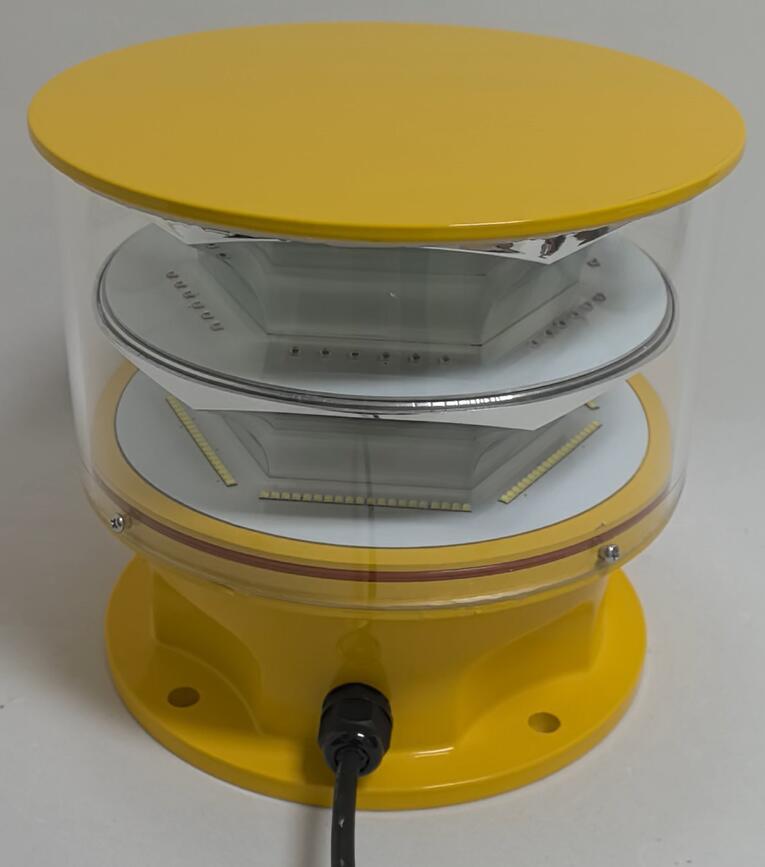
In the aviation industry, safety is paramount. A critical element that contributes to ensuring safety, especially during flight operations and ground activities, is the structure aircraft warning light. These specialized lights are designed to improve visibility and alert pilots and ground crew about potential hazards. From preventing collisions to guiding aircraft through adverse weather conditions, the importance of structure aircraft warning lights cannot be overstated.
What is a Structure Aircraft Warning Light?
A structure aircraft warning light refers to an essential lighting system installed on aircraft structures, including wings, tail sections, and fuselage, to make the aircraft more visible to other aircraft and ground personnel. These lights serve as a beacon to highlight the aircraft's position, size, and orientation, which is critical for safe operations, especially in low visibility conditions.

These warning lights are often placed on the top or bottom of the aircraft, as well as on other prominent parts like the vertical stabilizer. The lights are typically red or white, depending on the specific regulations set forth by aviation authorities. Their primary function is to signal the presence of the aircraft in both daytime and nighttime operations.
|
structure aircraft warning light |
6778 |
The Role of Structure Aircraft Warning Lights in Aviation Safety
Structure aircraft warning lights play a crucial role in various scenarios, each contributing to the overall safety of flight operations.
1. Preventing Mid-Air Collisions
One of the most important functions of structure aircraft warning lights is preventing mid-air collisions. In busy airspaces, multiple aircraft may operate at similar altitudes, and without proper visibility, the risk of collision increases. Structure aircraft warning lights help ensure that an aircraft is visible to other pilots, especially in low-visibility conditions like fog, clouds, or night operations.
By providing a visual cue about an aircraft’s position and orientation, the warning lights help other pilots to maintain a safe distance and avoid accidental proximity.
2. Enhancing Ground Operations
During ground operations, particularly during nighttime or in poor weather, the structure aircraft warning light is indispensable. Ground crew members rely on these lights to navigate around parked aircraft or during taxiing on the runway. The lights signal the aircraft’s presence, ensuring that personnel can safely avoid collisions with the aircraft, whether it is stationary or moving.
Without proper lighting on aircraft structures, there is an increased risk of accidents involving ground vehicles or personnel, especially in airports with high traffic and limited visibility.
3. Navigation Assistance in Poor Visibility
Aircraft, especially those operating in remote areas, mountainous terrain, or airports with poor visibility, often rely on structure aircraft warning lights for guidance. These lights not only make the aircraft visible from a distance but also help pilots navigate through the skies, particularly in regions where radar systems may not be fully operational.
Additionally, in certain flight conditions, structure aircraft warning lights can help pilots align with their flight path or confirm their altitude and position relative to nearby obstacles or other aircraft.
Technological Advancements in Structure Aircraft Warning Lights
As with other aspects of aviation technology, the development of structure aircraft warning lights has seen notable advancements over the years. The early designs of these lights were simple incandescent bulbs that consumed significant amounts of energy. However, recent innovations have led to the adoption of LED technology, which provides several benefits:
Energy Efficiency: LEDs consume less power compared to traditional bulbs, leading to reduced electrical load on the aircraft’s power system.
Durability: LED lights are more robust and resistant to damage from vibrations and environmental conditions, offering longer operational lifespans.
Visibility and Brightness: Modern LED lights are brighter and more visible from greater distances, improving the overall safety of operations.
Lower Maintenance Costs: With the longer lifespan of LEDs, maintenance requirements are minimized, reducing the need for frequent replacements and downtime.
Additionally, advancements in optical technology have allowed for more focused light patterns, enabling better visibility without unnecessarily dispersing light in unwanted directions.
Regulatory Standards and Requirements
The installation and operation of structure aircraft warning lights are governed by aviation regulatory bodies such as the International Civil Aviation Organization (ICAO) and the Federal Aviation Administration (FAA). These organizations have established specific standards regarding the placement, color, and intensity of warning lights.
For example, ICAO standards recommend that aircraft operating at night or in reduced visibility conditions be equipped with red or white strobe lights on their highest and most visible structures. These regulations are crucial to ensure consistency in the lighting systems across different aircraft types and to maintain a standard that all aviation professionals can rely on.
Challenges and Considerations
Despite the clear benefits, there are challenges associated with the use and maintenance of structure aircraft warning lights. One of the main challenges is ensuring that the lights are positioned correctly and are not obstructed by other aircraft components. In addition, the maintenance of the lights is essential for ensuring that they continue to function properly and effectively.
Environmental factors can also impact the performance of these warning lights. For instance, dirt, ice, or snow accumulation on aircraft surfaces can obstruct the lights and reduce their effectiveness. Regular cleaning and checks are therefore necessary, especially in regions with extreme weather conditions.
The structure aircraft warning light is a vital safety feature that contributes to the visibility, safety, and operational efficiency of aircraft. Whether in preventing mid-air collisions, aiding in ground operations, or assisting pilots in navigating challenging environments, these lights help ensure safer skies for everyone. As technology continues to evolve, the performance and reliability of structure aircraft warning lights will only improve, further enhancing aviation safety standards across the globe.